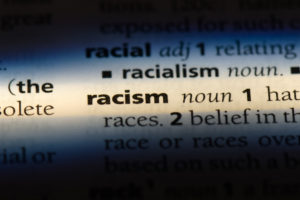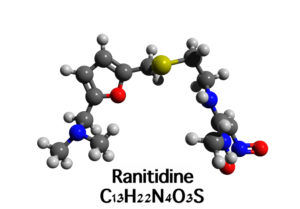Michael Monheit is a Pennsylvania lawyer and an authority on dangerous and defective drugs. His article in the Legal Examiner, Ohio Family Claims Fatal Heart Defect Caused By Zofran, on June 12, 2015, reports on allegations being leveled against the anti nausea drug Zofran. The drug was created for use by cancer patients to ward off the devastating side effects of chemotherapy. Over time the drug was prescribed “off-label” for pregnant women. “Off-label” means that the drug was not tested in the FDA approval process for use by pregnant women for the effects of morning sickness. Morning sickness is not an approved use on the drug label. But doctors started prescribing Zofran to their pregnant patients for nausea and the drug company GlaxoSmithKline promoted it as safe for use by pregnant women. Apparently the drug is effective in reducing nausea. But what about its effect on a developing fetus?
The lawsuit filed in the US District Court for the Northern District of Ohio, Western Division (citation no. 3:15-cv-1166, see documents at ZofranLegal.com) alleges that the the mother was prescribed Zofran for morning sickness during the pregnancy and that the child’s heart rate began to slow down a few days before delivery. Immediately after delivery on March 17, 2006 the child was diagnosed with a right ventrical heart defect, placed in the ICU, continued to fail and died on March 20, 2006 three days later according to the court documents.
The lawsuit filed alleges that GlaxoSmithKline encouraged doctors to prescribe Zofran for morning sickness in pregnant women despite reports of birth defects and that by 2000:
dozens of physician reports began to show a high rate of teratogenicity [fetal development injury], with Zofran use being associated with congenital heart defects, kidney malformations, and cleft palate and other facial defects. Furthermore, data were showing intrauterine deaths, still births, deaths shortly after births, and serious congenital defects in children who survived.
Zofran was widely used in Hawai’i by pregnant women seeking relief from morning sickness.
The Ohio lawsuit alleges that in 2004 a study commissioned by GlaxoSmithKline (the Einarson Study) documented that “twice the rate of ‘Major malformation’ (3.5% as opposed to 1.8%)” in children whose mothers took Zofran. And as Michael Monheit writes in his article there were danger signs in the study that added to the doctor reports noted earlier of birth defects:
In their complaint, the family says that the Einarson study’s authors “could not call [the doubling in major malformations] statistically significant because of the small sample size of only 176.” Even so, plaintiffs consider the study’s results a “danger sign[…],” one that they claim was ignored by GlaxoSmithKline. They say that the company did not “commission a larger study” to further investigate the Einarson study’s results.
Was GlaxoSmithKline playing the odds with the pregant women and their families as they continued to defend their product and market it “off-label” as safe? In the book “Merchants of Doubt” the authors describe the use of hired-gun scientists and junk science by huge corporations to mislead the public. They were focusing on the envirnoment and things like tobacco,. But was that what happened with Zofran? The well respected consumer organization Public Citizen alerts the public to what pills should be avoided in “Worst Pills – Best Pills“. In a recent article Worst Pills newsletter from March 2014, Dr. Sidney Wolfe writes about GlaxoSmithKline’s history of putting profits ahead of patient safety: WorstPills.org – Newsletter Article
|
“A concept used in tort law to indicate the standard of care or the legal duty one owes to others. Negligence, in the context of due care, is the failure to use that degree of care which a person of ordinary prudence and reason [the reasonable man] would exercise under the same circumstances. See 198 S.E. 2d 526, 529. Also, the “[f]ailure to exercise due care is the failure to perform some specific duty required by law.” 153 S.E. 2d 356, 359. It “means care which is reasonably commensurate with a known danger and the seriousness of the consequences which are liable to follow its omission. . . . Due care may be either ordinary care or a high degree of care, according to the circumstances of the particular case.” 438 P. 2d 477, 482.”“The duty not to harm others through negligence. The duty to follow the rules and to be careful. The legal standard for due care is to do what a reasonable person would do in the particular situation, or to refrain from doing that which a reasonable person would not do in that situation.”
“Ordinary, prudent person who normally exercises due care while avoiding extremes of both audacity and caution. Used as a test of liability in cases of negligence, this standard is not applied uniformly on all persons because varying degrees of reasonableness may be expected from a minor (infant), an adult, an unskilled person, or a professional such as a doctor. See also prudent man rule.”
“The concept is really very simple and common sense, and it applies to all of us in our daily lives, and it applies to doctors and hospitals. They have to conduct themselves in a reasonable and careful manner.”

A resident of Honolulu, Hawaii, Wayne Parsons is an Injury Attorney that has dedicate his life to improving the delivery of justice to the people of his community and throughout the United States. He is driven to make sure that the wrongful, careless or negligent behavior that caused his clients' injury or loss does not happen to others.











Comments for this article are closed.